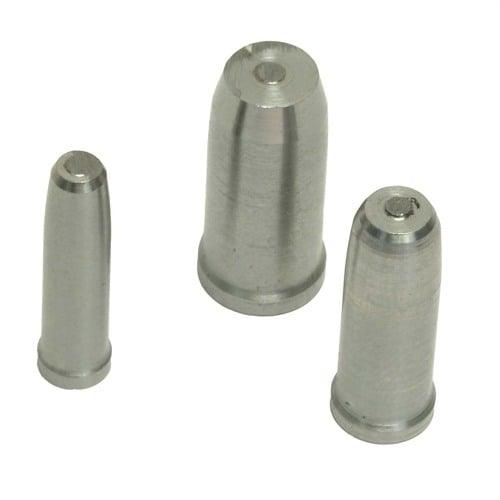I've been telling people for years to quit compulsively trimming their brass. Can't put metal back when you cut it off.
Trimming in general is usually a waste of time, but trimming new brass is probably the most short-sighted thing people do in reloading, it's literally introducing a variance on top of the manufacturing variances into your cases you'll have to correct for later.
Think it through - if you measure shoulders of new, unfired brass and
they aren't all the same that means when they're fired the cases
will move differently resulting in
cases of differing length. So if you cut cases with varied shoulder lengths to a consistent neck length (trimming from shoulder) or consistent case length (LE Wilson trimmer), the ending case lengths will absolutely be different after firing.
The difference between trimming and not trimming is that while cases will end up being different lengths either way, if you don't trim most/all cases (depending on how you sort to trim the first time) then after firing your cases will be longer than if you did trim the first time, leaving you more length to work with.
But the "I have to make them ALL IDENTICAL" crowd chimes in and can't handle that yes, cases will be different lengths until you stabilize the case shoulders, then start trimming the brass....... but still
only if needed. If the cases are shorter than the chamber, leave them alone until they need to be trimmed for max chamber length.
Y'all try it sometime. Funny how my 6.5-284 shoots in the .100s and .200s off the bench with dirty nasty unprocessed brass that has
never been trimmed (or cleaned for that matter, but that's for another post

). Current batch is 5x fired and still not to max chamber length. Shoulders only started bumping on the 4th firing. Brass is like a garden, let it grow!
My 243 AI went 14 firings without needing to be trimmed, because the brass is still short of
my actual chamber length plus my trim margin. The Sinclair tools give actual, measurable, and repeatable results are are very useful if anyone doubts their ability to just look at it with a bore scope (which is what I normally do, at least until they're close).
One big caveat is that I DO MEASURE chamber lengths, I don't just leave it be and pray nothing bad happens. If you don't want to do the work to check, please keep trimming compulsively. Better to be safe than crimp a case. 30-06 has been the worst for me in terms of actually hitting the end of the chamber, in only 2-3 firings sometimes.


